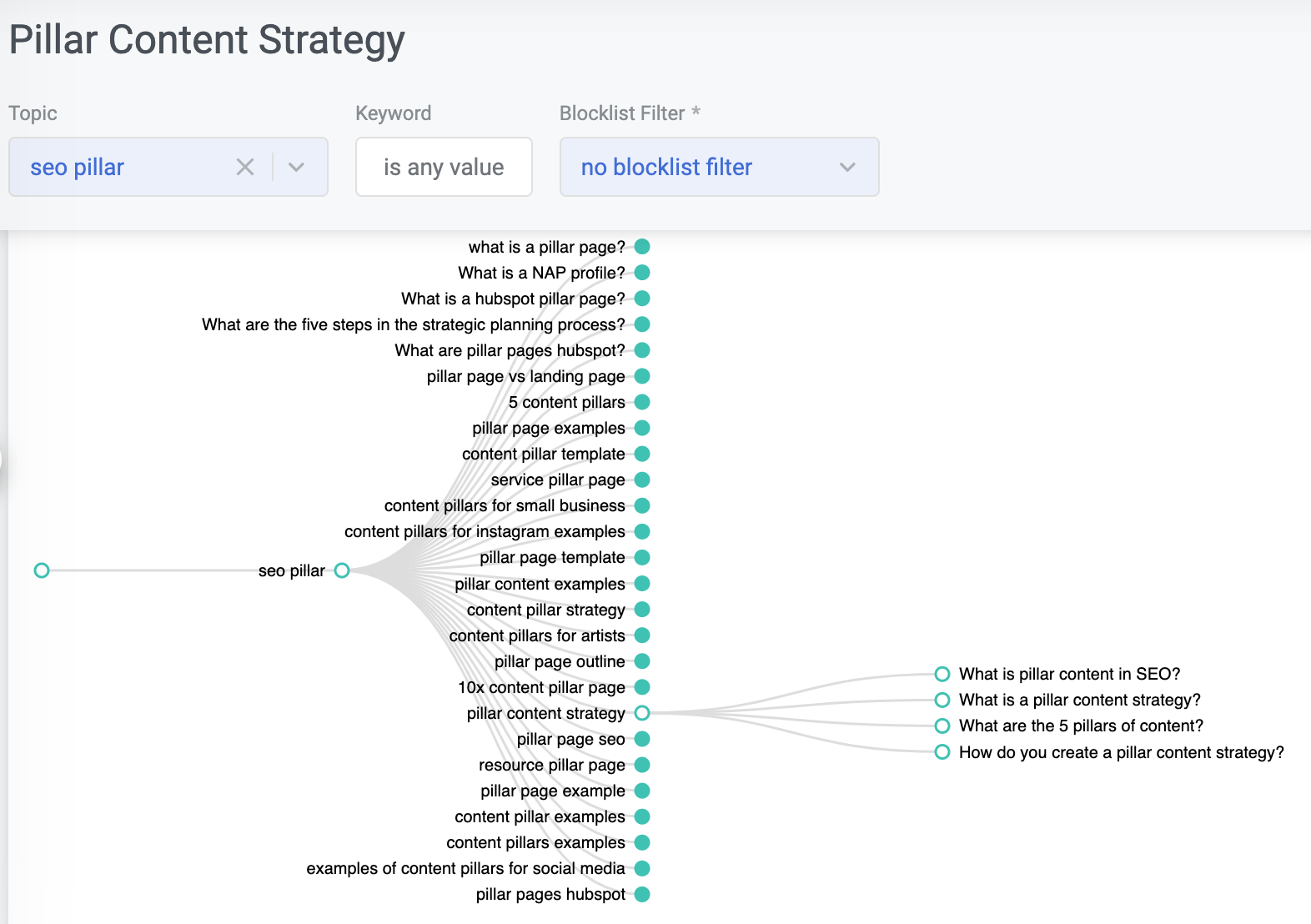What Is an Example of PBM?
June 14, 2022 •Josh Daugherty

In marketing, it’s difficult to overstate the importance of being on page one of your prospective customers’ favorite search engine. Page one rankings—scored by the complex and ever-changing algorithms at the heart of Google and other search leaders—bring a wide range of compelling benefits. These include increasing brand awareness, authority, and credibility, as well as increased traffic and a greater number of conversions.
Marketing teams are always looking for new ways to connect with prospective customers, and there’s an entire industry geared toward helping content marketers (like yourself, perhaps) navigate the world of search engine optimization (SEO).
Today, one of the most widely recognized methods for achieving modern marketing objectives is account-based marketing, or ABM. The idea behind ABM is relatively simple: it’s a strategic approach based on prioritizing the “big fish” clients and catering content to their needs. The thinking is, basically, “If we can connect with and convert the big players, additional success is inevitable.” And, to that end, ABM has been at the root of various companies’ success stories.
There are downsides to ABM, though. For example, it means expending resources (time, energy, money) to identify target accounts. It also comes with inherent risk when you consider how much an account-based approach might prematurely narrow the top of your marketing funnel by hyper-focusing on converting these specific accounts.
Simply put, what happens when the big account doesn’t convert? Pillar-based marketing mitigates this pesky issue.
What Is Pillar-Based Marketing and How Does It Relate to ABM?
Pillar-based marketing (PBM) offers an alternative to account-based marketing. PBM works toward similar goals as ABM—increasing brand awareness, website traffic, and conversions—but takes a different approach based on the creation and promotion of highly interesting, relevant, and timely content. Content for PBM campaigns is built strategically, based on a sophisticated understanding of the types of questions your prospective customers are asking. PBM works to uncover, explore, and address common customer pain points.
Regardless of industry, customers look to work with brands that align with their values and that make them feel valued, heard, and understood. And understanding prospects’ questions and pain points is the beating heart of PBM.
What Is PBM Strategy, and What Is an Example of PBM?
Next, let’s briefly explore what a pillar-based marketing approach looks like, by way of example. As the only pillar-based marketing platform in existence, we’re going to be looking at one of our own PBM strategy campaigns.
At DemandJump, we offer value to customers through advanced, AI-enhanced keyword research and strategic content development tools. Chances are, you’re reading this blog because you’re a content marketer, perhaps weary of ABM and looking for a new approach. You might be tired of the months it generally takes for most SEO strategies to deliver results or tired of pouring money and resources into ABM only for those coveted accounts not to convert.
…back to the PBM example we promised. We recently published an entire content pillar (and network of related content) around how to create an effective SEO content pillar, leveraging (and, in some ways, pressure-testing) our concept of pillar-based marketing.
Next, let’s take a look at how the content strategy was developed and implemented—and what kind of outcomes PBM created.
What Makes a PBM Campaign Successful?
The vital components of a successful PBM campaign are customer and market research, a thoughtful content strategy, and excellent, high-converting content. DemandJump provides an all-in-one platform for each component of successful PBM campaign development.

Customer and Market Research
Like account-based marketing, a successful PBM campaign begins with quality research. The goal is not to find and cater to that “white whale” client (as with ABM), but to instead appeal to and connect with a wider—though still refined and targeted—audience. So, using DemandJump’s own tools, we performed customer, market, and competitive research. The intention? To determine what kinds of questions prospective customers interested in creating an SEO pillar are asking, and what pain points they’re looking to solve.
We were able to identify a core topic—in this case, “SEO Pillar”—and then plan out a full content strategy based on related topic clusters. The idea was to identify a number of sub-topics and questions, based on search data. Within our platform, we could see not only what questions people are asking, but where they’re finding their answers. For added context, we also checked out what keywords our main competitors were using and their level of success with them.
Content Strategy
Next, we developed a topic cluster of around 20 questions we could answer with a series of blog posts. For the pillar content strategy to be effective, we wanted to build a “content ecosystem” of sorts, with a network of short and digestible blog content, complete with intuitive interlinking back to a bigger, authoritative piece (the pillar itself, around 3,000 words).
This way, if someone who might need our services is searching for suggestions for how to develop an effective topic cluster, for example, they should find our blog. In it, we answer the searcher’s most pressing questions, suggest they read more about the larger topic (“SEO Pillar”), and then (hopefully) click on our call-to-action (CTA) to engage with us and learn more about what DemandJump can do for their content marketing efforts.
DemandJump makes building out a research-based PBM content strategy easy with built-in keyword research and content planning tools.

Excellent Content
Next, it’s time to write! When creating blog content, try to relate to your readers by using an appropriate tone and vocabulary, organizing your writing for readability, and resisting the urge to litter the text with too many product shout-outs. Your content should be informative above all else—that’s how you build authority and credibility (and set yourself apart from the competition).
DemandJump’s pillar-based marketing tools demystify the process of creating effective content. How? Through robust analytical and competitive research insights and one-click content briefs that empower content marketers to group, organize, and write about the keywords and questions their potential customers are searching for.
Published…Now What?
Once the content pillar and supporting blogs are published on your website, the final phase of PBM is monitoring the campaign’s results.
- Are customers finding your website when they search for relevant information?
- Are they reading your content?
- Are they clicking your CTA or reaching out for more information or a product demo?
- Is the sales team looped in, ready to help nurture and qualify potential leads?
The same DemandJump tools that powered the PBM campaign’s keyword research and content strategy prove invaluable at this stage. You can view, filter, and manipulate data within the platform to develop a better understanding of which content is the most effective in attracting and engaging prospects. And you can see how your company’s search ranking improves, taking over your competitors and winning additional business.
Does PBM Work, Though?
You want to know whether this new approach works? We don’t blame you! To that end, we’ll let our results speak for themselves. Our PBM campaign—the “SEO Pillar” pillar—resulted in:
- 100 new first page rankings—within just one month of publishing.
- 10% increase in “SEO” topic-related traffic—in less than a month.
For a little more context, our PBM strategy drastically increased our conversions around the “SEO Pillar” topic. With this momentum on our side, we were able to make highly-informed, timely decisions around our paid advertising efforts, knowing we had successfully established domain authority and aligned our content with what exactly our prospects were searching for.
In other words…yes, PBM works.
Learn More About DemandJump’s Pillar-Based Marketing Platform
As wary as we may have grown toward the notion of “the next big thing,” we’re confident that pillar-based marketing is, indeed, the next big thing for content marketers. PBM accomplishes many of the same goals as ABM—increasing brand awareness, strategically targeting a specific audience, industry, or pain point, and so on—but in a way that delivers results in a fraction of the time.
We’ve helped companies across a number of industries surpass their content marketing objectives with pillar-based marketing. Get in touch if you’re curious to learn more about the PBM campaigns we’ve created or get into the details of additional pillar-based marketing case studies powered by our platform.
Intrigued? Ready to embark on a new content marketing endeavor? The good news is that you can try DemandJump for free today.
Featured Articles
Categories
- Attribution Tracking (13)
- Channel Optimization (11)
- Consumer Insights (68)
- Content Marketing (251)
- Data Science (8)
- Digital Marketing (6)
- Digital Transformation (26)
- Enterprise (10)
- Lead Generation (14)
- Market Intelligence (8)
- Marketing Analytics (39)
- Marketing Attribution (57)
- Marketing Management (153)
- Marketing Operations (86)
- Organic Search (222)
- Paid Search (52)
- Pillar-Based Marketing (63)
- Programmatic Advertising (9)
- SaaS Content (14)
- SaaS Marketing (29)
- Search Marketing (111)
- SEO Keyword Research (28)
- SEO Pillar (18)
- SEO Strategy (46)
- SMB (5)
- Website Content (12)


